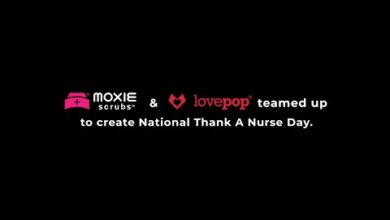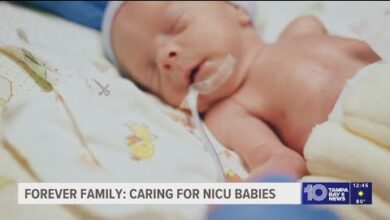New York’s Critical Care Nurse Staffing Legislation

Critical care patients are patients in a very delicate state of health who require critical care to be kept alive. In general, people in need of such care are patients who have had an accident in which they have been seriously injured, patients who have serious infections or who have undergone invasive or delicate surgery, and patients who have trouble breathing on their own, regardless of the cause, and patients who need ventilators to breathe for them. What all these patients have in common is that they need 24 hours of critical care and require special attention.
PRN Jobs in New York | RN, LPN & CNA Healthcare Staffing App
What are Safe Staffing Ratios for Critical Care Patients?
Generally, when patients are in critical care units, they should be supervised at all times by a nurse. A safe staffing ratio in hospitals worldwide is considered to be two (and no more than four) patients per registered nurse (RN), and this ratio is intended to safeguard the safety of patients in critical care and to enable hospitals to manage them appropriately. This implies a very high organizational level in the hospitals that provide this type of care and a very large commitment on the part of healthcare personnel, hospital administrators, and legislation for each region since it is a large budget when there are critical care units that have many patients at the same time, as is the case of many hospitals in large cities such as New York City.
What is the New Legislation for Critical Care Patients in New York?
The New York State Health Department has determined that in all 212 hospitals statewide, there should be two patients for every registered nurse and that this number should not be exceeded by more than four for the imposed reasons of safe staffing ratios. This has been a topic of debate for many decades, as not having safe staffing ratios in critical care units has been the cause of burnout, preventable deaths, and other related problems. The COVID-19 pandemic has demonstrated the importance of having sufficient nursing staff and appreciating it at all times.
During the pandemic, shortages of nursing professionals were recorded worldwide. This shortage has caused overall care to be affected for patients. Thus, triage has been implemented in many situations. This is why it is now increasingly appreciated that the lack of nursing professionals is extremely worrisome and debilitating to the healthcare facilities and health systems that patients frequently visit.
While there is much criticism of the handling of this situation by Gov. Kathy Hochul, the new nursing legislation is taking its course and will require adaptations in hospitals to achieve this safe staffing ratio. Some problems that were mentioned are the lack of registered nurses in the hospitals themselves, which requires hiring travel nurses to fill the gaps they have due to this shortage.
Other hospitals also choose to offer per diem shifts (also known as PRN – pro re nata). These shifts allow the hospital to distribute the registered nurses they already have in the different areas of care and to hire RNs temporarily while shortages exist to improve the quality of care and decrease the fatigue of their healthcare personnel. The importance of hiring enough RNs, whichever way they choose, lies precisely in improving their nurse to patient staffing ratios for the benefit of their institution. Travel. Consulting. Per diem. Whichever path the facility needs to take to supplement with contingent nurses – it is now required by law.
The new staffing-to-critical-patient ratio program is considered one piece of a multi-year, $20 million program to improve healthcare in all of New York State. The expected results are that over the next five years, new staff will be recruited, and existing staff will be retained to increase the healthcare workforce in hospitals and healthcare facilities by 20 percent. New York unions and associations backed this staffing law.
Travel Nursing Pay Is Decreasing: Now What?
Why are Safe Staffing Ratios Important?
The main objective of safe staffing ratios is to reduce patient mortality. Safe staffing ratios are considered to save the hospital money and contribute to the success of that facility. Of course, nursing professionals also benefit directly, as they have less stress on the job and can care for their patients properly without suffering burnout or fatigue.
New York had at least six patients per registered nurse in critical care units, and this caused several preventable deaths. A study by the University of Pennsylvania School of Nursing Center for Health Outcomes found that 4,370 deaths could have been prevented, and $720 million could have been saved over two years just by having a safe staffing ratio of no more than four patients per nurse.
Working in Critical Care Units as a Nurse
Registered nurses working in critical care units (also known as ICUs) need to have the training and work experience to take care of these delicate patients. Overall, a registered nurse is expected to have at least two years of critical care unit experience to take care of their patients in a hospital unit.
Critical care nurses must constantly monitor their patients, check vital signs regularly or check the machines that are monitoring vital signs, as any changes must be closely noted. They must also make sure that the LPNs and other nurses caring for the patients in their care are doing the necessary work of hygiene, feeding, cleaning, monitoring, etc. There is a long list of duties to be performed in critical care, but perhaps one of the most difficult is to be ready to deal with death, as many critical care patients will not fully recover and eventually, despite all efforts, will die.
A critical care registered nurse must be very quick to make decisions, be able to stay focused in the event of an emergency and be able to constantly assess situations. Although it is hard work, many RNs like the thrill of critical care work and choose to pursue this vital specialty.
At the end of the day, recognizing that critical care RNs are important is the goal in putting safe staffing ratios in hospitals, and hoping that patient care in hospitals will improve for the well-being of all is the hope in directing efforts toward this type of reform.







